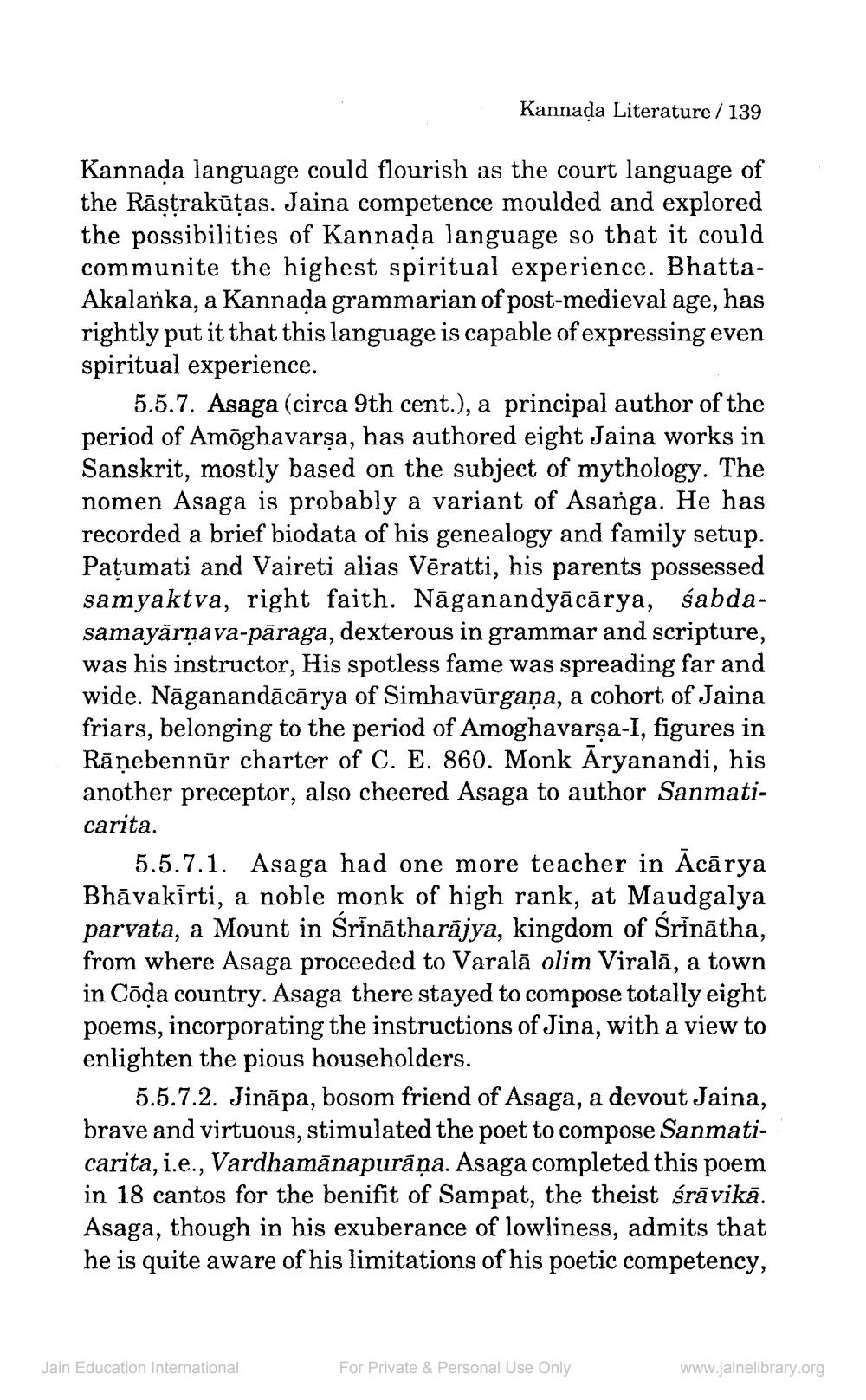________________
Kannada Literature / 139
Kannada language could flourish as the court language of the Rāstrakūtas. Jaina competence moulded and explored the possibilities of Kannada language so that it could communite the highest spiritual experience. BhattaAkalanka, a Kannada grammarian of post-medieval age, has rightly put it that this language is capable of expressing even spiritual experience.
5.5.7. Asaga (circa 9th cent.), a principal author of the period of Amõghavarşa, has authored eight Jaina works in Sanskrit, mostly based on the subject of mythology. The nomen Asaga is probably a variant of Asanga. He has recorded a brief biodata of his genealogy and family setup. Patumati and Vaireti alias Vēratti, his parents possessed samyaktva, right faith. Nāganandyācārya, sabdasamayārņava-pāraga, dexterous in grammar and scripture, was his instructor, His spotless fame was spreading far and wide. Nāganandācārya of Simhavūrgana, a cohort of Jaina friars, belonging to the period of Amoghavarşa-I, figures in Rāņebennur charter of C. E. 860. Monk Āryanandi, his another preceptor, also cheered Asaga to author Sanmaticarita.
5.5.7.1. Asaga had one more teacher in Acārya Bhāvakīrti, a noble monk of high rank, at Maudgalya parvata, a Mount in Srinātharājya, kingdom of Srinātha, from where Asaga proceeded to Varalā olim Viralā, a town in Cõda country. Asaga there stayed to compose totally eight poems, incorporating the instructions of Jina, with a view to enlighten the pious householders.
5.5.7.2. Jināpa, bosom friend of Asaga, a devout Jaina, brave and virtuous, stimulated the poet to compose Sanmaticarita, i.e., Vardhamānapurāņa. Asaga completed this poem in 18 cantos for the benifit of Sampat, the theist śrāvikā. Asaga, though in his exuberance of lowliness, admits that he is quite aware of his limitations of his poetic competency,
Jain Education International
For Private & Personal Use Only
www.jainelibrary.org




